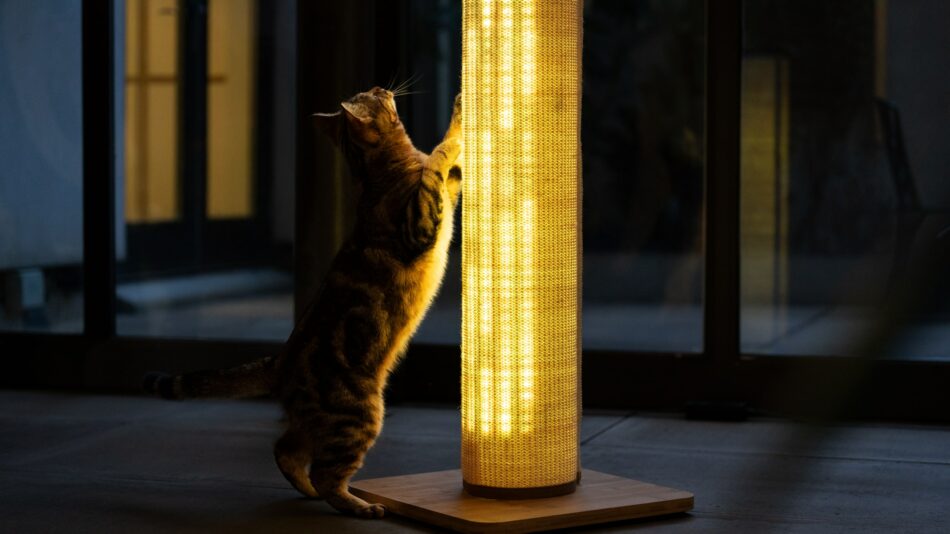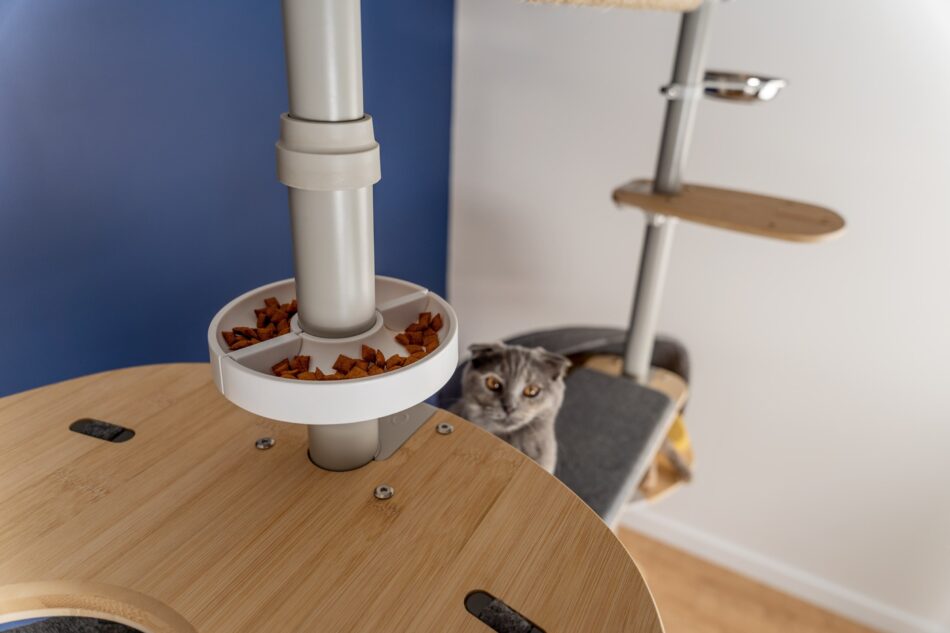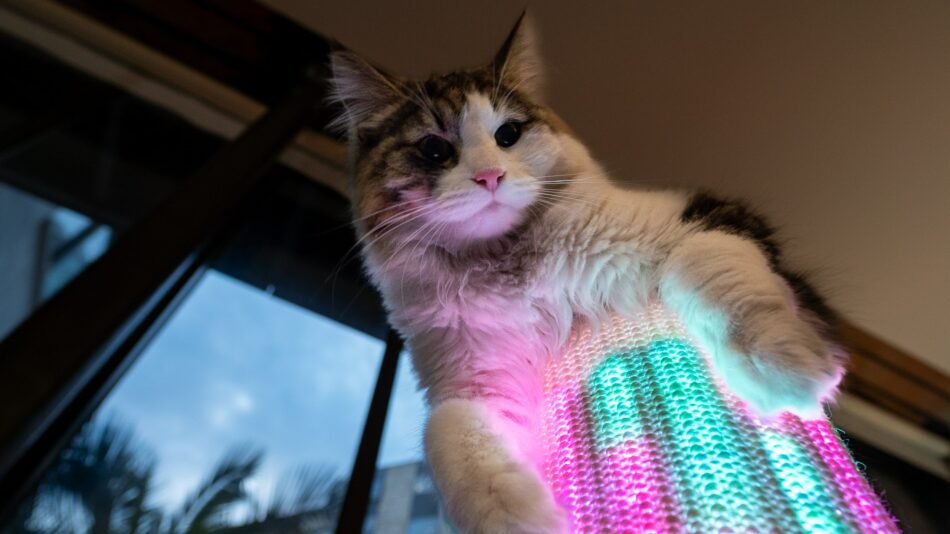The best ways to help your cat lose weight
Did you know that it’s becoming increasingly common for our pets to be overweight? Obesity in cats not only poses a risk to physical health such as a greater risk of developing serious problems like cardiac diseases, cancer, diabetes and arthritis, but can have an impact on their wellbeing too. Fortunately, helping your cat lose weight is simple and even fun, meaning your feline friend can soon be on their way to living a healthier and longer life.
Breed or obesity?
It’s not always straightforward to tell if your cat is overweight, especially if they have long hair and are a generally stockier breed. But, a healthy cat should have a well-proportioned body with a defined waist and neck. You should be able to easily feel your cat’s ribs and hip bone, and they should have minimal abdominal fat. Speak to your vet about what the ideal weight is for your cat’s breed but generally speaking, if your cat is between 10%-19% over this, then they’re considered overweight. 20% and over their optimum weight and your cat is considered obese.
5 tips to help your cat lose weight
Making the decision to help your overweight cat lose weight is the first step in giving them the life they deserve. But, before taking any measures and changing your cat’s diet, consult your veterinarian. They’ll be able to guide you on how much to feed your cat and identify if there are any other medical conditions that could be contributing to their weight.
1. Control the calories
Look for canned, high-quality, meat-based, and highly digestible food to give your cat. Canned or raw food contains a large percentage of water, which can help a cat feel full on fewer calories, and also allows you to control how much food you give your cat every day. Canned wet food is also better than dry food, as it means your cat won’t be nibbling on food throughout the day and eating when they’re not hungry.
Measure out how much food you’re going to give your cat in a day, and make sure you stick to it. Dividing the food into smaller and more frequent meals can help if you feel your cat is struggling with hunger, but keep track of what and how much you are giving them. If you live in a multi-cat household, feed your dieting pet separately to stop them from stealing food.
2. Less treats, more affection
High-calorie treats have to go and make sure everyone in the family knows the rules! It might seem unfair to completely stop giving your cat treats, but it’s the nicest thing you can do for them at this stage to help them lose weight.
Try substituting treats with a cuddle or a cat toy. You’ll find most cats will respond just as well to the extra attention. If you still feel like you want to treat your cat with something edible, look for low-calorie treats or try some vegetable cat nibbles such as broccoli, green beans or pumpkin.
3. Take your time
Weight loss should be done slowly and steadily to reduce the risk of several health issues, like fatty liver disease. Your cat should not lose more than 3-4% of their total body weight per month, so it’s important to be patient on their weight loss journey.
If you’re changing your cat’s diet, make sure you do this gradually to avoid upsetting their stomach. Substitute more and more of the old food with your new, healthier choice every day, or reduce the amount of food little by little.
4. Make time for play
Introducing new cat toys and games into your feline’s life can not only decrease boredom, help cats bond with their owners, and improve agility and coordination, but will also help them to lose weight by burning calories.
Try to find out what types of toys your cat likes, and switch them around every now and then to make sure they don’t get bored. Different cats like different toys, but feathers and catnip-infused toys will be a hit with most! Encourage games that force your cat to move around and use their entire body, such as searching for hidden things or chasing toys.
A scratcher is another great choice of cat toy, especially one that lights up. The Switch Cat Scratcher offers all the benefits of cat scratching such as supporting their hunting instincts and getting your pet active, but takes feline fitness to another level.
With your cat’s very own light show, the Switch provides pets with their own interactive entertainment system. Join in on the fun in the evenings for pet parent playtime or turn the Switch on whilst you’re at the gym to give your cat a workout of their own.
With over 1200 settings to control the light, speed, brightness and mode of the scratcher, you can find the best way to connect in colour with your feline friend.
5. Leashes aren’t just for dogs
Some cats love walking on the lead, others, not so much. If you’ve never tried before, allow your cat to get used to their harness at home first. You can then start with a short walk in the backyard or around the block. If their body language tells you they’re relaxed and content, you can increase the distance gradually.
Don’t worry if it proves a real challenge – some cats will never accept walking on a leash, and you should never force them. Stick to other forms of exercise such as playing with toys or a Freestyle Cat Tree from Omlet, which will allow them to get moving and unleash their inner wild side, whilst remaining safe in the home.
Omlet and your cat
Omlet designs products to meet the needs of cats of all sizes and breeds. Our ingenious cat products make for better bonding between pet and owner, meaning every feline can be on their way to living the best life possible. From our light-up Switch Cat Scratcher to our fun Freestyle Cat Tree, our designs continue to evolve the more we keep asking about what our pets and their owners want.
This entry was posted in Cats



